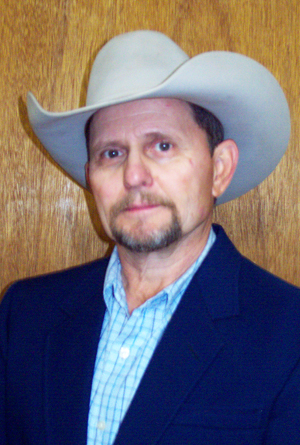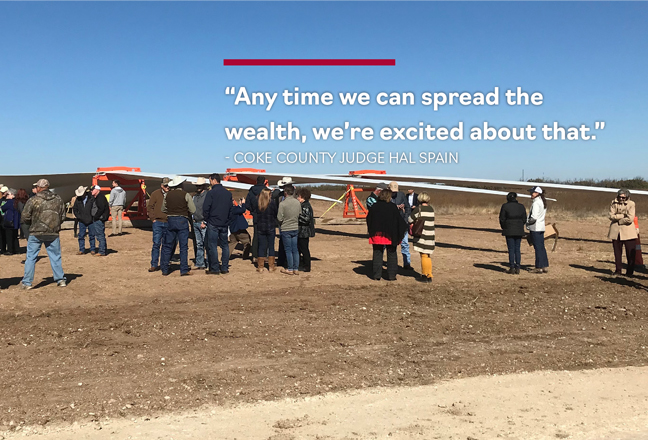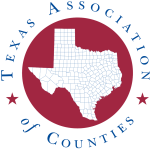County Magazine | April 23, 2023
A tale of two counties' growth
Two Texas counties have recently received attention for significant growth. Coke County in West Central Texas had the biggest increase in economic output of any county in the United States. Meanwhile, Kaufman County has the fastest growing population in the nation.
Economic growth blows into Coke County
Despite a decline in small businesses and the oil industry during the past 30 years and an agricultural sector that is battling drought and increased costs, Coke County had the biggest increase in adjusted gross domestic product percentage of all counties in the country.
According to the latest data from the Bureau of Economic Analysis, the county’s GDP increased 81.8% between 2020 and 2021, mostly thanks to wind energy.
Coke County Judge Hal Spain explained that Aviator Wind, a private wind farm that began producing energy in 2021, makes up approximately 75% of the county's GDP.

(Credit: Melinda McCutchen)
“Across the nation, wind energy facilities are providing a new source of revenue to the communities that host them. In many of these communities, such as Coke County, wind facilities overnight become the largest source of county tax revenue,” said Natasha Montague, senior community relations manager at Apex Clean Energy, the company that developed Aviator Wind.
The largest single-site, single-phase wind farm in the country, Aviator Wind consists of 191 turbines and has a total power output of 525 megawatts. Among those purchasing energy from those Coke County turbines are media giant Meta and fast-food behemoth McDonald’s.
Apex chose Coke County because it offers a strong wind resource, compatible existing land uses, existing transmission lines and roads, and meaningful community support, according to the company.
The county also offered a 10-year tax abatement to the company. The abatement reduces the company’s tax burden while the project is getting off the ground by allowing the company to make $787,500 annual payments in lieu of paying taxes. After 10 years, the company will be added to the tax roll.
"If you're a county competing for these industries, they’ll go to the next county if you don't offer these abatements," Spain said, adding that if the state Legislature limits abatement agreements, companies such as Apex will go elsewhere for future projects.
Spain said the new income from Aviator Wind is vital for the county. On a limited budget because the state limits tax increases to 3.5% a year without having to get voter approval, the county would not otherwise have funding for large expenditures like much needed facility updates.
The county has also been able to leave its tax rate the same for the past several years, which Spain expects to continue. The school and hospital taxing districts have benefited as well.

attended the blade signing ceremony in November 2019 to kick off the construction of the Grape Creek Wind
project. At the time, it was billed as the largest single installation of windmill energy in North America.
(Credit: Coke County Judge Hal Spain)
"It means revenue for landowners, jobs for local workers, increased spending on local goods and services, and tax revenue to fund schools and services," Montague said, addingthat the wind farm in Coke Countywill displace nearly 35 million tons of CO2 – the equivalent displaced by 38 million acres of forest in a year.
Two other wind farms that existed before Aviator Wind, Capricorn Ridge Wind and Horse Hollow Wind Energy Center, make up another estimated 10% of the county's GDP.
Additionally, during the past two years, a 24-inch gas pipeline and a 36-inch liquid petroleum pipeline were constructed in the county, Spain said. The pipelines transect the width of the county, and both have pumping stations that were constructed in the southern part of the county. They make up another 10% of Coke County's GDP.
The next big income generator on Coke County's horizon is a 1,200-acre solar farm, which Spain expects to be installed in 2024.
"It looks like it's just a matter of time," he said. "Any time we can spread the wealth, we’re excited about that."
Kaufman County manages explosive growth with communication, planning and education
About 10 to 15 years ago, Kaufman County started growing, and it hasn't stopped.
Just a 45-minute drive from downtown Dallas, the area is still rural enough to offer open spaces, and its good schools attract families. Now the fastest growing county in the country, according to the U.S. Census Bureau, Kaufman County saw its population grow 18% between 2019 and 2021.
County Judge Jakie Allen explained that land prices are not yet as high as in other areas around Dallas. Jobs also attract people to the area. Amazon, Walmart, AutoZone, Madix Inc. and Nucor Corp. are just a few companies that have brought a significant number of manufacturing, distribution and fulfillment center jobs to the county.
"With the growth that's coming to Texas in any metro area, counties are going to experience growth," Allen said.
Ray Dunlap, president of the Terrell Economic Development Corporation, said with the area's open land and intersections of major highways, earlier leaders predicted and prepared for today's growth. Local leaders created a tax increment reinvestment zone so tax revenue would eventually be redirected back into the area, Dunlap said.
After all, population growth also means more demand for infrastructure and services.

entertainment, have anchored more retail and restaurants to meet demand from the county's growing population.
(Credit: EDSuites)
After all, population growth also means more demand for infrastructure and services.
Commissioner Mike Hunt pointed out that building and maintaining roads is crucial as the area is faced with increasing traffic and wear and tear from heavy construction trucks. Local leaders have passed bond issues and are working with the state on roads.
The county outgrew its historic courthouse, and voters passed a $50 million bond in 2019 for theKaufman County Justice Center, which opened in November 2022. A 25,000-square-foot expansion, funded by the American Rescue Plan Act, is already under construction.
Donna Simmons, Kaufman County communications and economic development coordinator, explained that at least 30,000 rooftops willbe built in the county during the next 18 months. When developers seek tax breaks, local leaders agree to their request if they comply with certain requirements like annexing into one of the cities, supporting the volunteer fire department or building roads, broadband or parks.

(Credit: Kaufman County)
Planning in this way minimizes the tax burden on homeowners who would otherwise fund the building of resources. Most developers are willing to agree to things like donating school and park sites, providing infrastructure and funding constables to patrol their sites, because it benefits their development.
"If you wait, your taxes will go up. If you do it now, companies will foot the bill," Simmons said, adding that the group is careful not to let development overrun the county's charm, history, natural beauty and farming community.
Educating the public is a huge piece of managing the county’s growth. Dunlap said zoning and annexation are important for people to understand because it allows officials to be proactive instead of reactive about what is built.
Simmons partnered with area schools, and students made videos on topics to raise awareness about issues such as why it takes so long to build a road and why people need to be selective when selling their land. The arrangement is a win-win. It gave the students a civic lesson, course credit and a portfolio piece while expanding Simmons' viewing audience.

